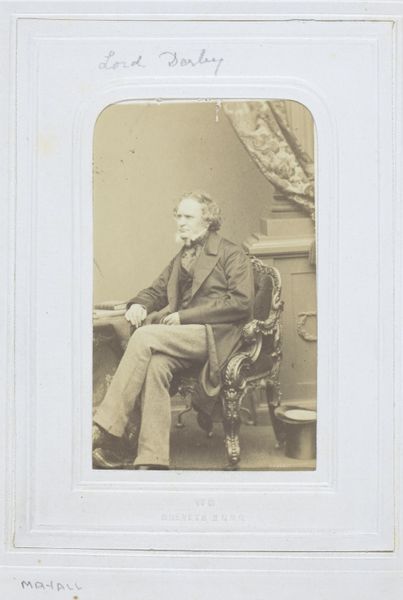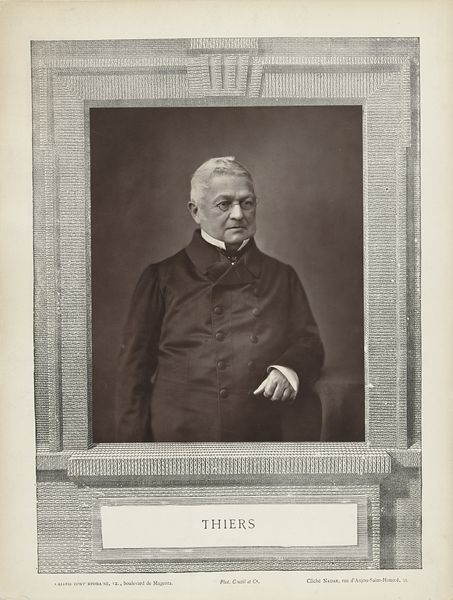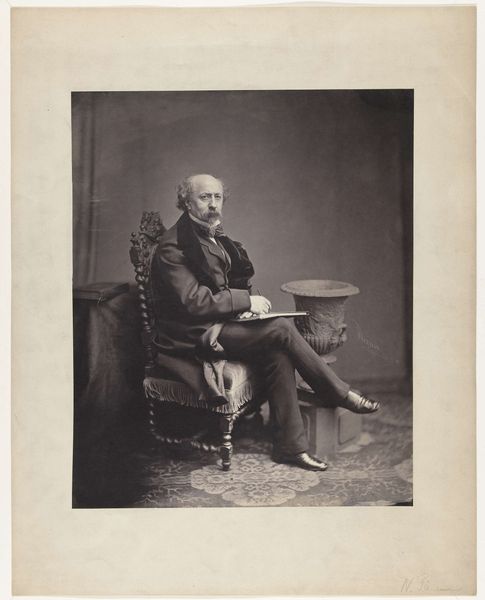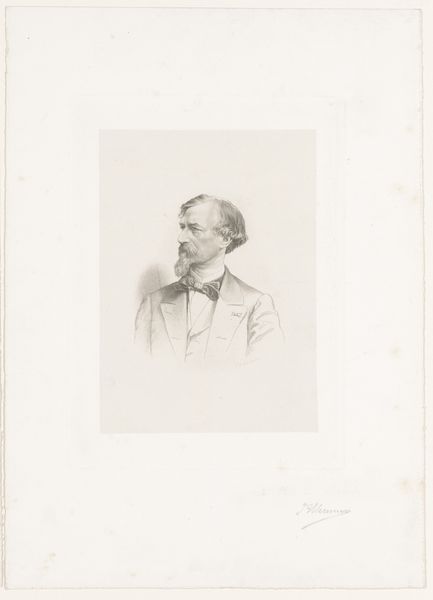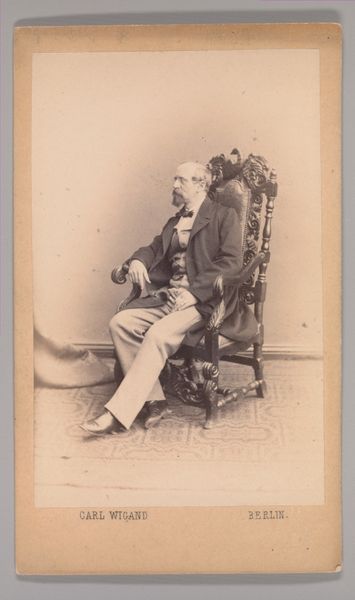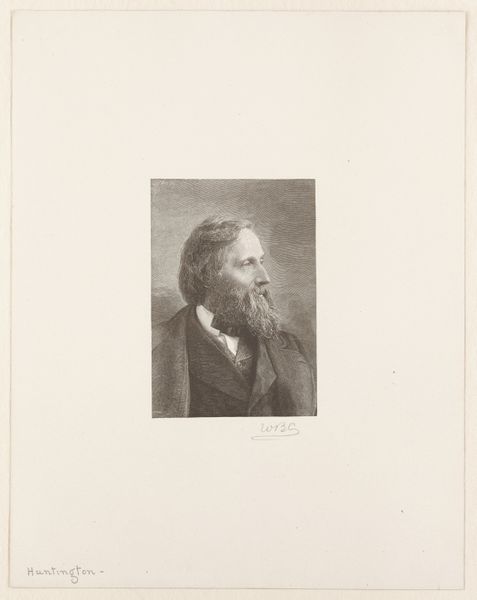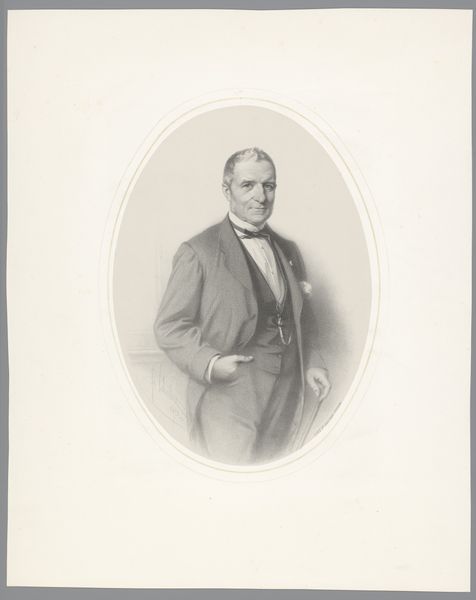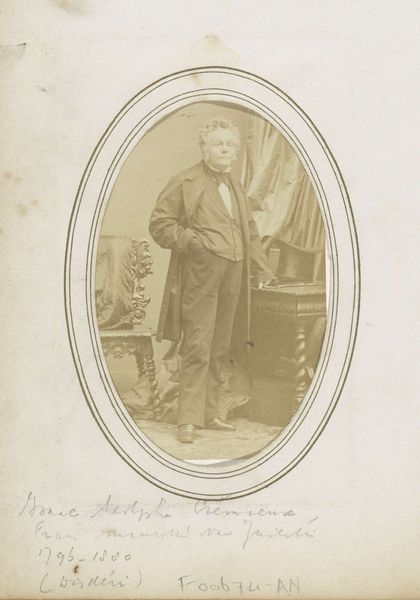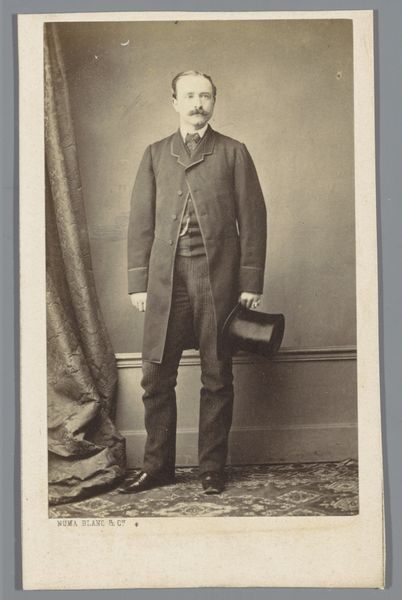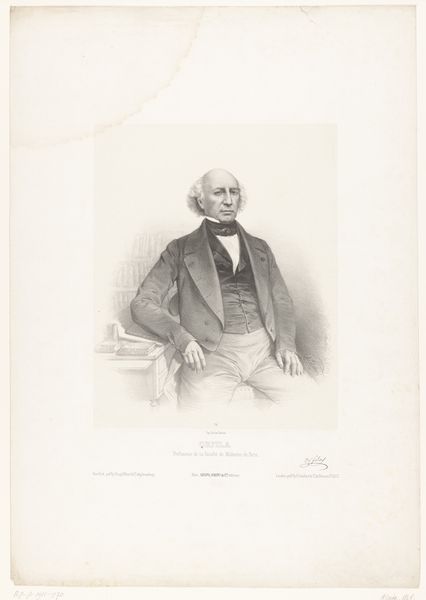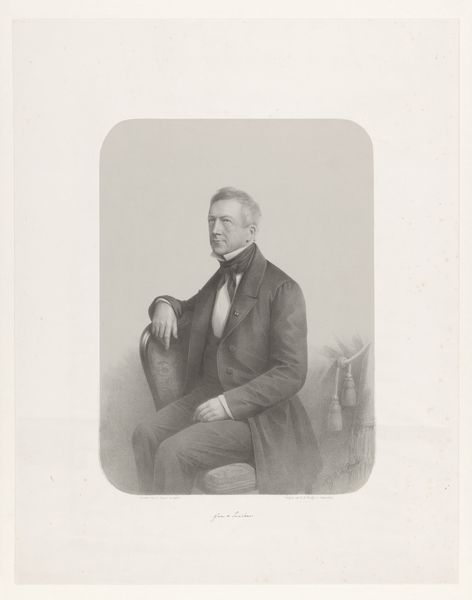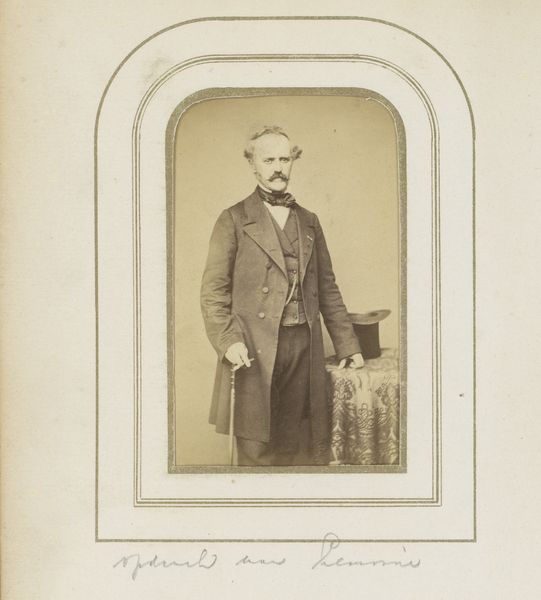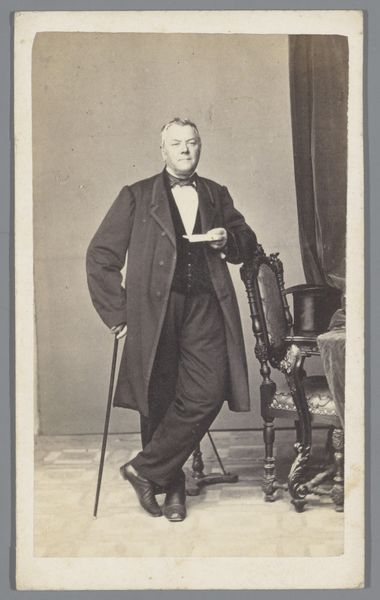
Victor Hugo (French novelist, playwright, and poet, 1802-1885) 1875 - 1876
0:00
0:00
Dimensions: 23.5 × 19.2 cm (image/paper) ; 34 × 26 cm (mount)
Copyright: Public Domain
Curator: This is a print featuring a daguerreotype of Victor Hugo, the eminent French novelist, playwright, and poet, created by Bertall et Cie. between 1875 and 1876. Editor: My initial impression is one of carefully constructed dignity. The tones are subdued, and Hugo is positioned in a way that exudes a kind of reserved power. The chair, the draped fabric—they all contribute to a staged tableau. Curator: Indeed, photography in this period served specific purposes. Hugo, a towering literary and political figure, used images like this to project a particular persona. He was very aware of his public image and carefully curated it, especially after his return from exile. Editor: There's a stillness that is arresting. The artist has harnessed the nuances in light to carve out his form. Note how the crisp focus accentuates the details in his attire, but how it dissolves in the fabric behind. Curator: Consider also the burgeoning print culture of the late 19th century. Images like these, reproduced and widely circulated, helped shape public perceptions of figures like Hugo and further cement his legacy. The image helped broadcast Hugo's political views. Editor: Looking at the textural gradient across his jacket, it offers a subtle visual counterpoint to the more rigid lines of the frame surrounding the photograph itself. The tonal range in this portrait is exceptional. The eye is consistently drawn back to his countenance, so sharp amidst a soft image. Curator: This piece exemplifies the romanticism of that time. His slightly disheveled attire, his solemn yet compassionate face – a very deliberate construction for his intended audience. It is meant to present him as an intellectual, but with a man-of-the-people aura. Editor: Considering how the interplay of texture and tonality elevates it beyond mere representation, I find myself returning to the careful balance within this visual frame, seeing how the artist captured his sitter so evocatively. Curator: And it reminds us how crucial visual culture was to consolidating political and cultural power in the 19th century, as people made images with very specific messages. Editor: Precisely. This offers such compelling layers when considering how the image resonates aesthetically and contextually.
Comments
No comments
Be the first to comment and join the conversation on the ultimate creative platform.
